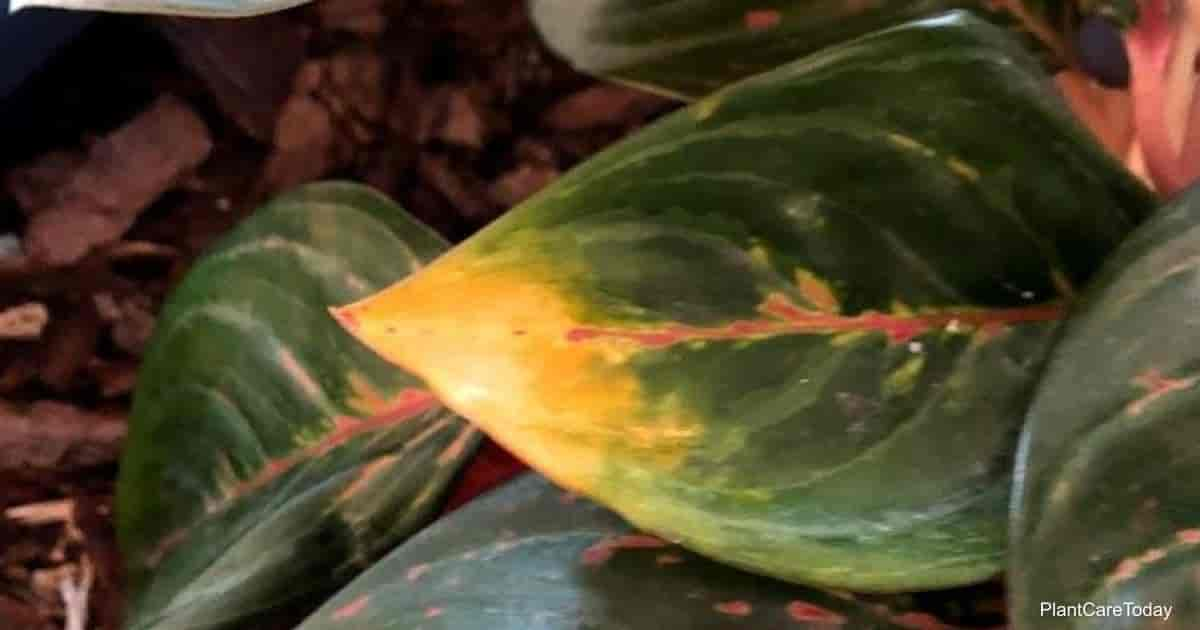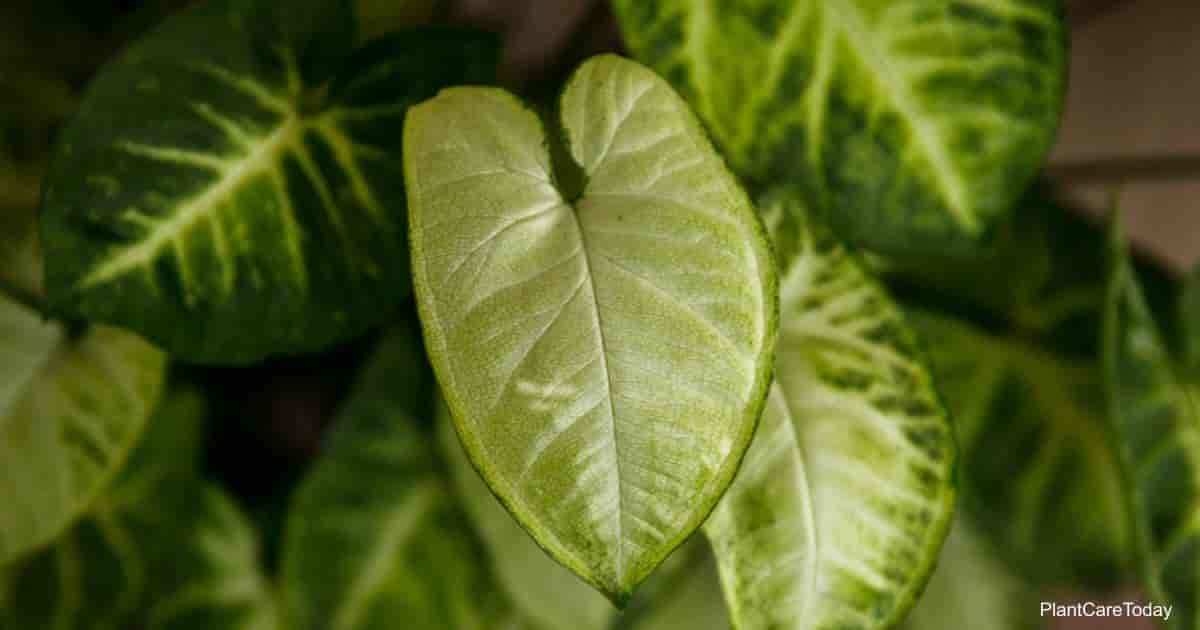Hailing from the rainforests of South and Central America, with a range stretching from Mexico to Argentina and the Caribbean, comes the biggest genus in the entire Araceae family: the Anthuriums (an-THUR-ee-um).
These tropical perennials have several common names, including:
- Flamingo Flower
- Flamingo Lily
- Laceleaf
- Painted Tongue Plant
- Spathe Flower
- Tailflower (or Tail Flower)
However, they are usually just referred to as anthuriums.
These plants have become quite popular, not only for the wide variety and tropical feel but for another little oddity.
It turns out that many Anthurium varieties prefer life as an indoor plant and is far easier to care for when potted than when planted outdoors!
Even stranger, this tropical plant is cherished for its flowers, even though most people never notice the actual flowers.
This is because the plant has heart-shaped leaves which resemble a flower but protect the actual flowers.
If you’ve ever wanted to bring an exotic, tropical feel into your home, anthuriums are indeed one of the best choices.
Note: Because there are over 1,000 species and cultivars of anthurium out there, the following guide will cover general care for the genus.
Your mileage may vary, so adjust as needed and ask your local garden center, nursery, or distributor if your plant has any unique needs or qualities.
Potted Anthurium Flower Care
Size & Growth
Anthuriums tend to be shorter, ranging around 2′ to 3′ feet tall and 1′ to 2′ feet wide.
However, these plants are climbers and are known to reach 12′ to 15′ feet when their aerial roots have adequate support.
It will generally grow all year, but a short resting period of about 6 weeks in winter will encourage better growth for the next growing season.
Most of the leaves on these plants are of a glossy green, set in an alternating pattern along the stems.
Other leaves form a spathe and tend to be mistaken for flowers due to their modified heart shape and colorful appearance.
These are bright red on Anthurium andraeanum and Anthurium scherzerianum but have a wide range of colors on other species.
Flowering and Fragrance
As mentioned, the spathe is often mistaken for a flower on these plants.
It can be a wide range of colors, such as burgundy, gold, green, lavender, orange, purple, red, yellow, white, or variegated, with cultivars expanding the palette considerably.
The actual flowers are small and easily missed, as the spathe sometimes hides the spadix.
Blooming for this plant can vary significantly based on environmental conditions but may potentially last over the entire year in three-month cycles.
Fertilized flowers give way to small, globulous berries, which generally contain two seeds.
Light & Temperature
As a climber, anthuriums are sensitive to direct light and may suffer burns if exposed for too long on a hot day.
Instead, place them in a sunny window where they’ll receive bright, indirect light or full sun only in the morning.
Try to avoid too much shade, as this can slow the growth of the spathe and spadix, reduce flowering, and dull the spathe leaves.
Your flamingo flower prefers a higher humidity and will feel most at home in the kitchen or bathroom.
You can also augment the humidity level with a pebble tray or humidifier if it drops below 50% percent.
Aim for a daytime temperature of 70° to 85º degrees Fahrenheit and evening temperature around 10º degrees cooler.
The plant can handle a max temperature range of 45° to 90° degrees Fahrenheit but will go dormant if it dips below 50° degrees Fahrenheit.
Watering and Feeding
Most anthuriums prefer moist soil, but root rot is a common risk when overwatering.
Thus, the soak-and-dry method tends to work best.
First, stick your finger in the soil to check for moisture.
When the soil is dry 1 to 2″ inches down (depending on the species), it’s time to water.
Slowly pour some rainwater or distilled water over the soil until it seeps from the drainage holes.
Give the plant a monthly ¼ strength balanced liquid fertilizer during the growing season.
Soil & Transplanting
Anthurium plants love a well-draining, loamy soil. No soggy soil!
A simple, effective choice for your containers is a blend of equal parts orchid potting mix and perlite.
Repot Anthuriums annually in the spring if the plant shows signs of becoming root-bound.
You can choose to put it in a new pot one size up (approximately 1″ inch larger in diameter) or divide the plant at this time.
Grooming And Maintenance
Anthuriums benefit from a bit of pruning now and then, although it’s not vital.
Using sterile shears, work from the top down, pruning away damaged or diseased leaves as you go, and deadhead spent flowers at the base of their stem.
Remove any suckers that are forming before they have a chance to get any bigger.
How To Propagate Anthurium Tallflower
Propagation is relatively easy with this plant, and several different methods are available.
Stem cuttings and division tend to be the most popular methods.
However, you can also trim off the aerial roots from root-bound plants for propagation.
Finally, seeds are another method but may not be a viable option for some cultivars.
Laceleaf Pests or Diseases
Anthuriums are vulnerable to common pests, such as mealybugs, scale, spider mites, and whiteflies.
Root rot is the primary threat to these plants, although they may also develop blight – fungal-based forms of root rot and leaf spot.
Anthuriums belong to the arum family, meaning they contain high amounts of calcium oxalate crystals.
Ingestion of these crystals can cause kidney stones, irritation of the mouth, indigestion, and other symptoms.
As a result, they are considered toxic to both humans and pets.
Contact dermatitis (such as rashes) is common among sensitive individuals, so gloves are encouraged when handling these plants.
Anthurium Uses
The long-lasting blooms make these plants perfect for centerpieces, tables, and other displays.
Compliment them with brightly colored containers.
They’re also considered a clean air plant.
Credit : Gary Antosh (https://plantcaretoday.com/anthurium-plants-indoors.html)





